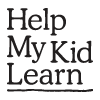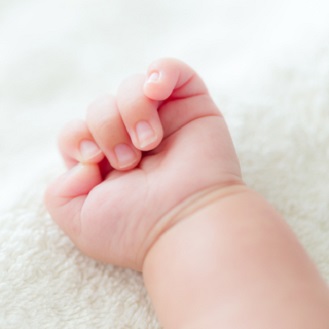What to do with this activity?
Babies are born with certain automatic reflexes that are built into human beings. Probably the most important of these is called the "rooting reflex". If you touch your newborn baby's cheek or lips with a finger or a nipple, they will turn towards it and suck - essential for feeding.
Another fascinating reflex we are born with is the "palmar grasp reflex". If you put a finger on the open palm of your newborn, their hand will close around it and grasp it. Their grasp is surprisingly strong - sometimes strong enough to hold their own weight for short periods. Have a look at this video of a mother seeing what her newborn can do. If you try this, make sure your baby is safe and hasn't got far to fall. Scientists think that this reflex dates back to our ape ancestors. Ape babies needed to hang on when mother was on the move.
Your baby will lose this reflex by around 6 months old. From that age they will have the ability to control their own grasping movements.
If you would like to know more about what to expect from your baby at this age click here.
-
Why am I doing this?
Learning to move, reach and grasp helps children develop the muscles and skills to scribble and learn to write when they get older. Body awareness and learning to do big movements (like crawling and walking) and small movements like the pincer movement (where you lift up things with your index finger and thumb) are important parts of your child's development. It is part of awakening and developing your brain. For your young child, reaching for objects helps build their coordination and will help them hold crayons later on.
-
How can I do more?
Have fun with your child dancing to music. This helps their coordination. If your child is moving their arms or body at all they are dancing!
Rate this activity
![]()
![]()
![]()
![]()
![]()
Based on 27 reviews
How would you rate it?
1 = Poor, 5 = Great.



